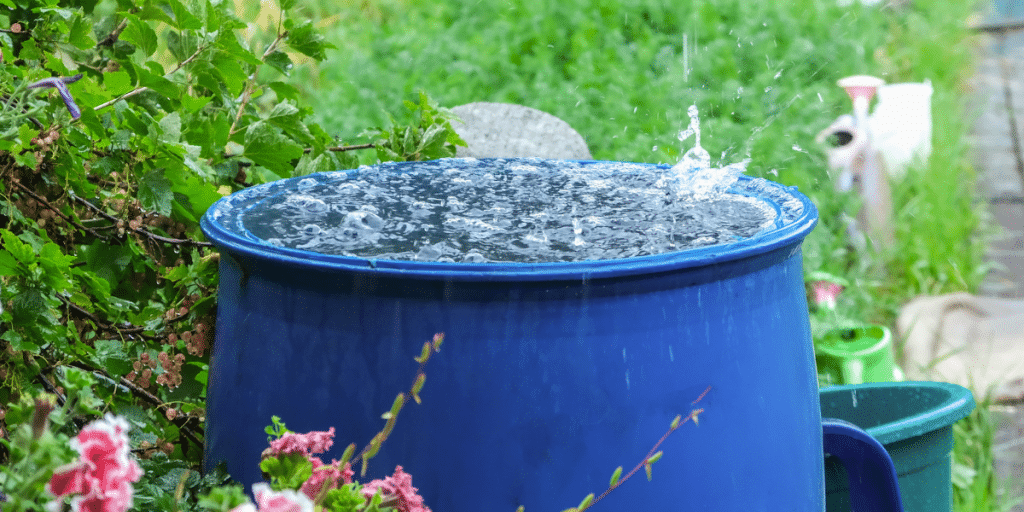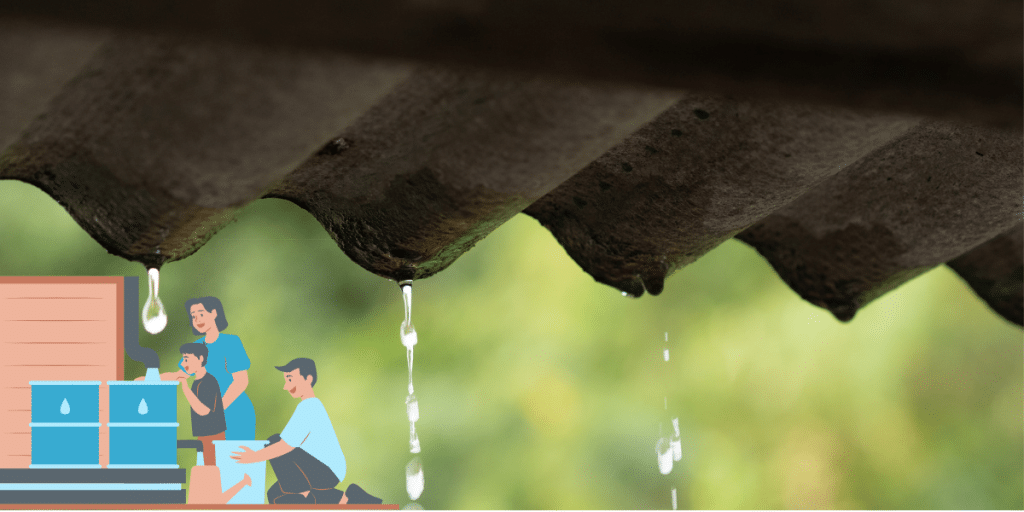Harnessing Natures Gift: The Power of Rainwater Harvesting

Imagine a world where every drop of rain is valued, captured, and used to nourish our gardens, homes, and lives. Welcome to the empowering world of rainwater harvesting, an ancient practice turned modern necessity in our quest for sustainability. In an age where water scarcity is becoming a pressing global issue, harvesting rainwater is no longer just an eco-friendly choice; it's a vital step towards a more sustainable and resilient future.
Rainwater harvesting is the art and science of collecting and utilizing rainwater, a resource that's often taken for granted. This method is not just about reducing your water bills or decreasing the demand on municipal water supply; it's a journey towards self-sufficiency, a step closer to living in harmony with nature. It embodies a simple yet profound principle: make the most of what nature provides, with minimal impact on our planet.
In this article, we'll dive into the world of rainwater harvesting, exploring its myriad benefits and the transformative impact it can have on our environment, communities, and personal lives. Whether you have a sprawling backyard or a cozy urban balcony, you'll see how harnessing rainwater can bring a new dimension to your sustainable living practices.
So, gear up for an enlightening exploration into rainwater harvesting. It's time to turn those raindrops into liquid gold and become a steward of one of Earth's most precious resources.
The Global Water Crisis and Urban Strain
As we look around, it's clear that water, the lifeblood of our planet, is under siege. The global water crisis is not just looming; it's already at our doorstep. Urban areas, with their sprawling concrete landscapes and dense populations, face the brunt of this crisis. The strain on municipal water systems is immense, leading to shortages, rationing, and in some cases, complete depletion of local water sources.
This crisis is further compounded by climate change, which brings erratic rainfall patterns, extended droughts, and increased water pollution. Traditional water sources are becoming less reliable, less clean, and more expensive to access. Meanwhile, the ever-growing demand for water in urban areas continues to rise, creating a cycle that seems hard to break.
In this context, rainwater, a resource that's abundantly available yet often overlooked, presents a viable solution. The problem isn't a lack of water; it's the way we manage and utilize it. Rainwater harvesting offers a way to alleviate the pressure on municipal systems, reduce our environmental footprint, and create more resilient urban communities.
Understanding Our Water Footprint: The Necessity of Rainwater Harvesting
Before we dive into the benefits of rainwater harvesting, let's take a moment to understand the scale of water usage in our daily lives and traditional farming methods compared to more sustainable practices like aquaponics, hydroponics, and aeroponics.
Individual Water Usage:
- Daily Use: On average, an individual uses about 80-100 gallons (approximately 300-380 liters) of water per day for drinking, bathing, cleaning, and cooking.
- Weekly/Monthly/Yearly: This translates to roughly 560-700 gallons (2,100-2,650 liters) weekly, 2,400-3,000 gallons (9,100-11,350 liters) monthly, and 29,200-36,500 gallons (110,500-138,200 liters) annually.
Agricultural Water Use:
- Traditional Farming: Conventional farming methods are often water-intensive. For example, it takes about 20 gallons (76 liters) of water to grow one head of lettuce using traditional methods.
- Aquaponics: This system combines fish farming with plant cultivation, using up to 90% less water than traditional farming. The water is recirculated, with fish waste providing nutrients for the plants.
- Hydroponics: Growing plants in a nutrient-rich water solution can save approximately 70-80% of water compared to soil-based growing.
- Aeroponics: This method, where plants are grown in an air or mist environment, is the most water-efficient, using up to 95% less water than traditional farming.
By comparing these figures, we can see the stark contrast in water efficiency between traditional agricultural methods and sustainable alternatives. This disparity underlines the importance of adopting water-saving practices like rainwater harvesting, not just for personal use but also for food production. Next, we'll explore how rainwater harvesting can play a pivotal role in reducing this water footprint and contributing to a more sustainable lifestyle.
Benefits: The Transformative Advantages of Rainwater Harvesting
Having understood our substantial water footprint, the benefits of rainwater harvesting become even more compelling. This sustainable practice offers a multitude of advantages, both for individual households and the broader community:
- Conservation of Freshwater Resources: Rainwater harvesting significantly reduces the demand for freshwater. By utilizing rainwater for non-potable and, with proper treatment, potable uses, we conserve valuable freshwater resources for essential needs.
- Alleviation of Urban Water Crisis: In urban areas where water scarcity is a growing concern, rainwater harvesting can alleviate pressure on municipal water supply, ensuring more consistent access to water for all residents.
- Reduction of Stormwater Runoff and Pollution: Capturing rainwater helps reduce stormwater runoff, which can carry pollutants into waterways. This leads to cleaner rivers, lakes, and oceans, benefiting ecosystems and wildlife.
- Cost Savings and Energy Efficiency: Collecting and using rainwater can lead to significant savings on water bills. Moreover, since rainwater systems often operate on gravity, they require less energy than traditional water pumping systems.
- Improved Plant Health and Yield: Rainwater is naturally soft and free from many chemicals found in tap water, making it ideal for gardening. Plants watered with rainwater often show improved health and yield.
- Resilience Against Climate Change: With changing rainfall patterns due to climate change, rainwater harvesting provides a buffer against droughts and water shortages, making communities more resilient.
- Educational and Community Engagement: Implementing rainwater harvesting systems can serve as an educational tool, raising awareness about water conservation and encouraging community involvement in sustainable practices.
- Enhanced Self-Sufficiency: For households and communities, rainwater harvesting is a step towards self-sufficiency, reducing reliance on external water sources and creating a sense of empowerment.
Rainwater harvesting is more than just a technique to save water; it's a holistic approach that impacts environmental conservation, community resilience, and personal wellbeing. In the next section, we'll provide a practical how-to guide to help you start your own rainwater harvesting journey.

How-To Guide: Setting Up Your Rainwater Harvesting System
Embarking on your rainwater harvesting journey is an exciting venture. Here's a straightforward guide to setting up a basic rainwater harvesting system at your home:
- Assess Your Needs and Capacity: First, determine how much water you need and can realistically collect. Consider the size of your roof as this will dictate your collection potential.
- Choose the Right Location: Identify suitable spots for your rain barrels or tanks. These should be placed under downspouts for maximum efficiency.
- Select Your Containers: Rain barrels are a popular choice for beginners. Ensure they are durable, food-grade (if using water for edibles), and have a secure lid to prevent debris and mosquitoes.
- Install a Diverter or First-Flush System: This is crucial to divert the first flush of rain, which may contain contaminants from the roof, away from your storage container.
- Set Up the Collection System: Connect your gutters to the storage containers using a downspout, ensuring a tight fit to avoid leakage and contamination.
- Implement a Filtration System: If you plan to use the water for gardening, simple mesh filters can remove debris. For more advanced use, like laundry or bathing, consider additional filtration and purification systems.
- Plan for Overflow: Have a plan for when your barrel fills up. You can direct overflow to a garden or connect multiple barrels.
- Maintenance: Regularly clean your gutters, tanks, and filters to keep the system efficient and the water clean.
- Comply with Local Regulations: Ensure your setup complies with local water harvesting laws and guidelines.
With this system, you can start capturing and using rainwater for various purposes around your home and garden. Remember, every drop counts towards a sustainable future. Here is a formula to estimate how much rainwater you can collect based on the size of your roof. The formula is fairly simple and can be expressed as follows:
Collected Rainwater (gallons) = Rainfall (inches) × Catchment Area (square feet) × 0.623
Here's a breakdown of the formula:
- Rainfall (inches): This is the amount of rainfall. You can use average rainfall data for your area, or measure the rainfall in inches for a specific storm or period.
- Catchment Area (square feet): This is the area of your roof. Measure the length and width of your roof and multiply them to get the area in square feet.
- 0.623: This is a conversion factor that translates the volume of water (in inches of rain) over a square foot surface into gallons.
For example, if you have a 1,000 square foot roof and your area receives 1 inch of rain, the calculation would be:
1 inch×1,000 square feet×0.623=623 gallons
This means you can potentially collect 623 gallons of water from that rainfall.
To convert the collected rainwater from gallons to liters, you can use the conversion factor where 1 gallon is approximately equal to 3.785 liters. Using the same formula but converting the result to liters, it would be:
Collected Rainwater (liters) = Rainfall (mm) × Catchment Area (square meters) × 0.1
In this formula:
- Rainfall (mm) is the amount of rainfall in millimeters.
- Catchment Area (square meters) is the area of your roof in square meters.
- 0.1 is the conversion factor that translates the volume of water (in mm of rain) over a square meter surface into liters.
For example, if your roof is 100 square meters and the rainfall is 25 mm, the calculation would be:
25 mm×100 square meters×0.1=250 liters
So, for a 25 mm rainfall, you could collect approximately 250 liters of water from a 100 square meter roof.
Remember, this calculation provides an estimate. The actual amount can vary based on factors like the efficiency of your gutters, the slope of your roof, and losses due to evaporation or leakage.
Next, we'll explore the long-term impacts of integrating rainwater harvesting into your lifestyle.
Sustaining Our Future with Rainwater Harvesting

The adoption of rainwater harvesting has far-reaching impacts, extending well beyond the immediate benefits of water conservation. As we integrate this practice into our daily lives and communities, we contribute to a more sustainable, resilient, and environmentally conscious world.
- Environmental Restoration: Over time, widespread rainwater harvesting can significantly reduce the stress on natural water bodies and ecosystems. By lowering the demand on rivers and groundwater, we allow these resources to replenish and sustain diverse wildlife.
- Climate Change Resilience: As weather patterns become more unpredictable, rainwater harvesting enhances our resilience to water scarcity and droughts. Communities that efficiently manage their rainwater resources are better equipped to handle extreme weather conditions.
- Reduced Energy Consumption: Large-scale water distribution systems are energy-intensive. By harvesting rainwater locally, we reduce the energy required for pumping, treating, and transporting water, thereby lowering our overall carbon footprint.
- Sustainable Agriculture: For farming communities, rainwater harvesting can revolutionize irrigation practices. It provides a reliable water source, ensuring crop sustainability and food security, especially in arid regions.
- Community Empowerment and Education: Implementing rainwater harvesting initiatives fosters community engagement and education. It empowers individuals and communities to take charge of their water resources, promoting a culture of sustainability and shared responsibility.
- Long-Term Cost Savings: While the initial setup of a rainwater harvesting system involves some investment, the long-term savings on water bills are substantial. Over time, the system pays for itself and continues to provide economic benefits.
- Legacy of Sustainability: By adopting rainwater harvesting, we set an example for future generations, instilling values of resourcefulness, environmental stewardship, and sustainability.
In conclusion, rainwater harvesting is more than a mere water-saving technique; it's a pivotal element in our journey towards a sustainable future. It's about understanding and respecting the natural water cycle, reducing our ecological footprint, and ensuring that we leave a healthy, thriving planet for generations to come.
So, are you ready to take a step towards a greener, more sustainable future? Rainwater harvesting is a clear path forward, and the time to start is now.
